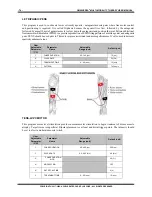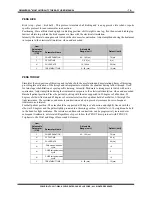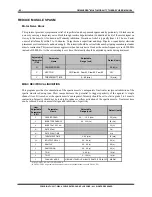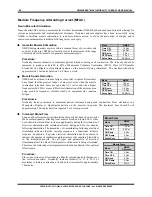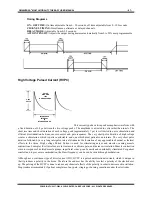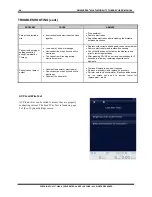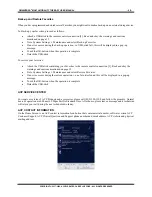
- 86 -
OMNIVERSA
®
MULTI-MODALITY THERAPY USER MANUAL
COPYRIGHT © 2017-2020, ACCELERATED CARE PLUS CORP., ALL RIGHTS RESERVED
Medium Frequency Alternating Current (MFAC)
Neuro-Muscular Stimulation
Since the mid-18th Century, neuromuscular electrical stimulation (NMES) has been used as an adjunctive therapy for
various neuromuscular and musculoskeletal disorders. Clinicians and investigators have been successfully using
NMES to facilitate muscle contraction, to re-educate muscle action, to aid in the prevention of atrophy and to
overcome neuromuscular inhibition following injury or surgery.
Isometric Muscle Stimulation
NMES during isometric exercise offers a reduced threat of over-stress and
re-injury to the joint. NMES is clinically used at the mid-point of the range
of motion where the muscle can generate maximum torque.
Procedure:
Gradually increase intensity to maximum patient tolerance during each contraction. The intensity should be
increased to produce at least 50 to 80% of Maximum Voluntary Contraction (MVC). Place ACP Reusable
Electrodes in a Bipolar or Quadripolar pattern on the muscle(s) being stimulated. The treatment should be
approximately 15 minutes duration 3 to 4 times a week.
Muscle Spasm Reduction
NMES can be utilized to induce fatigue of muscles in spasm. Researchers
have found that the greatest fatigue of muscles occurs when the muscle
contraction relaxation times are equivalent (1:1 ratio) and when higher
frequencies (60-80 Hz) are used. Electrical stimulation of the motor neuron
using medium frequency currents results in neuromuscular junction
fatigue.
Procedures:
Gradually increase intensity to maximum patient tolerance during each contraction. Place electrodes in a
Monopolar, Bipolar or Quadripolar pattern on the muscles in spasm. The treatment time should be of
approximately 20 minutes duration repeated 2 or 3 times per week.
Increased Blood Flow
Long and short-term electrical stimulation of muscle has been shown to alter
the vascular dynamics affecting local muscle blood and lymph flow. It has
been shown that blood-flow increased significantly during the first minute of
electrical stimulation and remained elevated during and for ten minutes
following stimulation. The immediacy of vasodilatation following electrical
stimulation indicates that the vascular response is a functional, reflexive
response. In addition, long-term electrical stimulation has been shown to
increase the number of capillaries and thus improve the capillary blood-flow
to the stimulated muscle. Not all types and parameters of electrical
stimulation affect the blood-flow dynamics of the muscle being stimulated.
Therefore, the following clinical parameters should be adhered to for optimal
effectiveness.
Procedure:
Place one or two sets of electrodes in a Bipolar or Quadripolar technique over
the selected muscle(s). Gradually increase intensity to 15 to 30% of
maximum voluntary contractions. Continue the treatment for approximately
10 minutes.
Mode
NMES
Time ON
10 Sec
Time OFF
50 Sec
ON Ramp
2 Sec
OFF Ramp
2 Sec
Pulse Rate
35-50Hz
Mode
NMES
Time ON
10 Sec
Time OFF
10 Sec
ON Ramp
1-2 Sec
OFF Ramp
1-2 Sec
Pulse Rate
35-50Hz
Blood Flow
Mode
NMES
Simultaneous
Time ON
15 Sec
Time OFF
50 Sec
ON Ramp
2 Sec
OFF Ramp
2 Sec
Pulse Rate
50Hz
Muscle Pump
Mode
NMES
Alternate
Time ON
4 Sec
Time OFF
4 Sec
ON Ramp
2 Sec
OFF Ramp
2 Sec
Pulse Rate
35Hz



